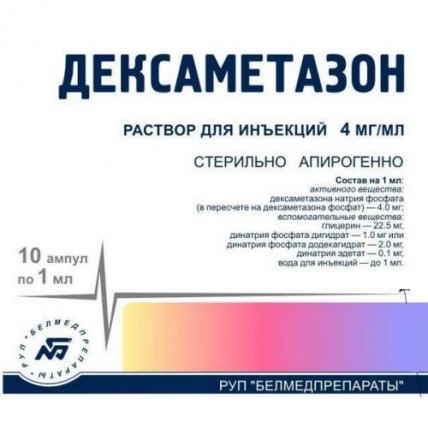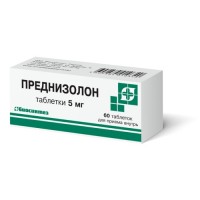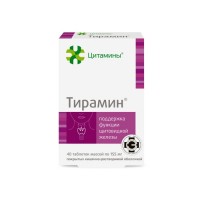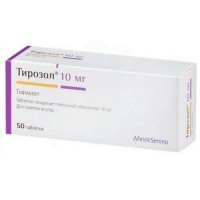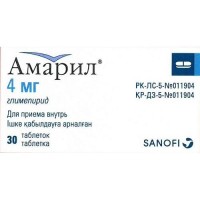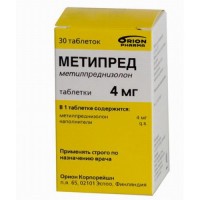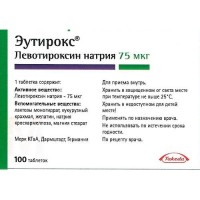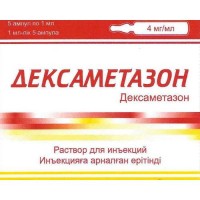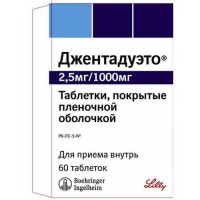Dexamethasone 4 mg / ml 1 ml 10s solution for injection in ampoules
- $4.60
Out Of Stock
The instruction for medical use
of DEXAMETHASONE medicine
the Trade name
Dexamethasone
the International unlicensed
name Dexamethasone Dosage Form Solution for injections of 4 mg/ml, 1 ml, 2 ml
Structure
of 1 ml of drug contains
active agent – phosphate sodium dexamethasone (in terms of dexamethasone phosphate) 4 mg,
excipients: glycerin, phosphate dinatrium a dihydrate or phosphate dinatrium dodecahydrate, dinatrium edetat, water for injections.
Description
Transparent colourless or light yellow color liquid.
Pharmacotherapeutic group
Corticosteroids for system use. Glucocorticosteroids.
The ATX H02AB02 code
the Pharmacological
Pharmacokinetics At properties intravenous administration contacts specific protein carrier – transcortinum – for 70-80%, at introduction of high doses of drug the linking with proteins decreases to 60-70% due to transcortinum saturation. Easily passes through gistogematichesky barriers, including hematoencephalic and placentary. At parenteral administration it is metabolized quicker and respectively pharmacological effects are less long. Smakh is reached during 1-2 h Biotransformiruyetsya in a liver, generally by conjugation with glucuronic and sulfuric acids, to inactive metabolites. Elimination half-life makes of T1/2 blood 3-5 h, biological elimination half-life – 36-54 h. It is removed generally with urine (a small part – with breast milk) in the form of 17 ketosteroids, glucuronides, sulfates. In not changed look about 15% of dexamethasone are allocated with urine.
The pharmacodynamics
Interacts with specific cytoplasmatic receptors and forms the complex getting into a kernel of a cell and stimulating synthesis of mRNK: the last induces formation of proteins, including the lipokortin mediating cellular effects. Lipokortin oppresses A2 phospholipase, suppresses a liberation of arachidonic acid and inhibits biosynthesis of endoperoxides, prostaglandins, the leukotrienes promoting processes of inflammation, an allergy, etc. Interferes with release of mediators of inflammation from eosinophils and mast cells. Brakes activity of hyaluronidase, a collagenase and proteases, normalizes functions of an intercellular matrix of cartilaginous tissue and a bone tissue. Reduces permeability of capillaries, stabilizes cellular membranes, including lizosomalny, release of cytokines (interleukins and gamma interferon) from lymphocytes and macrophages oppresses, causes involution of adenoid tissue. Restores sensitivity of adrenoceptors to catecholamines. Accelerates catabolism of proteins, reduces glucose utilization by peripheral fabrics and raises a gluconeogenesis in a liver. Reduces absorption and increases calcium removal, sodium detains (and water), reduces secretion of AKTG.
Indications
- cases when oral administration of drug is impossible
- the diseases demanding introduction of a high-speed glucocorticosteroid
- the significant inflammation of a joint (except infectious) when usual therapy is inefficient and also at other states with a synovitis and an exudate (after aspiration of synovial fluid) - shock (burn, traumatic, operational, toxic)
- fibrous condensed a folliculitis, a ring-shaped granuloma, a sarcoidosis
- wet brain
- allergic reactions
- prevention of nausea and vomiting when carrying out emetogenny chemotherapy
- a respiratory distress syndrome of newborns
- acute insufficiency of bark of adrenal glands
- bronchial asthma
- thyrocardiac crisis
- an acute hepatitis
- a hepatic coma
the Route of administration and doses
Intravenously (in / c), intramusculary (in oil), vnutrisustavno, periartikulyarno. The adult at acute and medical emergencies enter in/in slowly, struyno or by drop infusion, or in oil 3-4 times in a dose of 4-20 mg into days. The maximum single dose – 80 mg. A maintenance dose – 0.2-9 mg in days. A course of treatment 3-4 days, then pass to oral administration of dexamethasone.
To children – in oil each 12-24 h in a dose of 0.02776-0.16665 mg/kg.
At intra articulate introduction the recommended dose makes from 0.4 mg to 4 mg once. Intra articulate injections can be repeated in 3-4 months, it is possible to enter drug at most 3-4 times into the same joint within a year, the drug can be administered at the same time in 2 joints. More frequent use can lead to injury of a cartilage of a joint.
The dose of drug depends on the size of the affected joint. Usually in big joints 2-4 mg of dexamethasone, are entered into small joints - 0.8-1 mg. Dexamethasone doses which enter into a synovial bag make 2-3 mg, doses which are entered into a sinew vagina make 0.4-1 mg, doses which enter into a sinew make 1-2 mg.
The dexamethasone dose for introduction to area of defeat is equal to an intra articulate dose. It is possible to administer the drug at the same time a maximum to 2 areas of defeat.
Around a joint it is recommended to apply a dose from 2 to 6 mg to introduction to soft tissues.
At shock (adult) – in/in 20 mg once, then on 3 mg/kg during 24 h in the form of continuous infusion or in/in once 2-6 mg/kg, or in/in on 40 mg each 2-6 h, it is possible in/in introduction of 1 mg/kg once. Therapy of shock has to be cancelled as soon as the condition of the patient is stabilized, usual duration no more than 2-3 days.
In wet brain (adult) – 10 mg in/in, then on 4 mg each 6 h in oil before elimination of symptoms, reduce a dose in 2-4 days and gradually – during 5-7 days – stop treatment.
Allergic diseases - in oil in the first injection on 4-8 mg. Further treatment is carried out by oral dosage forms.
In nausea and vomiting when carrying out chemotherapy - in/in 8-20 mg in 5-15 min. prior to a chemotherapy session. The further chemotherapy has to be carried out when using oral dosage forms.
For treatment respiratory a distress syndrome of newborns - 4 introductions in oil on 5 mg each 12 h, in the subsequent from the seventh day of times in 24 h. The maximum daily dose - 80 mg.
Duration of use of dexamethasone depends on the nature of pathological process and efficiency of treatment and is from several days to several months and more.
At acute insufficiency of bark of adrenal glands (children) in oil on 0.0233 mg/kg (0.67 mg/sq.m) in days in 3 injections every third days, or daily on 0.00776-0.01165 mg/kg (0.233-0.335 mg/sq.m) in days.
At sudden drug withdrawal, especially in case of use of high doses, development of a withdrawal of glucocorticosteroids is possible: anorexia, nausea, block, generalized musculoskeletal pains, general weakness. Too fast dose decline after long-term treatment can result in acute adrenal insufficiency, arterial hypotension, death. After drug withdrawal for several months the relative insufficiency of bark of adrenal glands can remain. If during this period there are stressful situations, appoint temporarily glucocorticoids, and if necessary – mineralokortikoida.
Side effects
the Frequency of development and severity of side effects depend on duration of use, size of the used dose and a possibility of observance of a circadian rhythm of appointment.
- decrease in tolerance to glucose, 'steroid' diabetes or a demonstration of latent diabetes, oppression of function of adrenal glands, an Icenco-Cushing syndrome (a crescent-shaped face, obesity of hypophysial type, a hirsutism, increase in arterial blood pressure, a dysmenorrhea, an amenorrhea, a myasthenia, striya), a delay of sexual development at children
- increase or a loss of appetite, a meteorism, a hiccups, nausea, vomiting, pancreatitis, 'steroid' ulcer of stomach and a 12-perstny gut, an erosive esophagitis, bleedings and perforation of digestive tract. In rare instances - increase in activity of 'hepatic' transaminases and alkaline phosphatase
- arrhythmias, bradycardia (up to cardiac arrest), development (at predisposed patients) or strengthening of severity of chronic heart failure, change on the electrocardiogram, characteristic of a hypopotassemia, increase in arterial blood pressure, hypercoagulation, fibrinferments. Patients with an acute and subacute myocardial infarction have a distribution of the center of necrosis, delay of forming of cicatricial fabric that can lead to a rupture of a cardiac muscle
- a delirium, a disorientation, euphoria, hallucinations, manic-depressive psychosis, a depression, paranoia, increase in intracranial pressure, nervousness or concern, insomnia, dizziness, vertigo, a cerebellum pseudoneoplasm, a headache, spasms
- sudden loss of sight (at parenteral administration in the head, a neck, nasal sinks, head skin adjournment of crystals of drug in eye vessels is possible), a back subkapsulyarny cataract, increase in intraocular pressure with potential damage of an optic nerve, tendency to development of consecutive bacterial, fungal or viral infections of eyes, trophic changes of a cornea, an exophthalmos
- the increased removal of Ca2+, a hypocalcemia, increase in body weight, negative nitrogenous balance (the increased disintegration of proteins), the increased sweating. Caused by mineralokortikosteroidny activity - a delay of liquid and Na + (peripheral hypostases), a hypernatremia, a gipokaliyemichesky syndrome (hypopotassemia, arrhythmia, myalgia or a spasm of muscles, unusual weakness and fatigue)
- delay of growth and processes of ossification at children (premature closing of epiphyseal regions of growth), osteoporosis (it is very rare - pathological bone fractures, aseptic necrosis of a head humeral and a femur), a rupture of sinews of muscles, a 'steroid' myopathy, decrease in muscle bulk (atrophy)
- the slowed-down healing of wounds, petechias, ecchymomas, thinning of skin, hyper - or hypopigmentation, steroid eels, striya, tendency to development of a pyoderma and candidiases
- allergic reactions: generalized (skin rash, an itching of skin, an acute anaphylaxis), local allergic reactions
- development or exacerbation of infections (emergence of this side effect is promoted by in common applied immunodepressants and vaccination), a leukocyturia, a syndrome of 'cancellation'
- local reactions at parenteral administration: burning, numbness, pain, paresthesias and infections in the injection site, is rare - necrosis of surrounding fabrics, formation of hems in the place of an injection, an atrophy of skin and hypodermic cellulose at introduction in oil (introduction to a deltoid muscle is especially dangerous). At in in introduction: arrhythmias, 'inflows' blood suit, spasms. At intracranial introduction - nasal bleeding. At intra articulate introduction - strengthening of pain in
the Contraindication joint
- for short-term use according to vital indications the only contraindication is hypersensitivity
- for intra articulate introduction: the previous arthroplasty, pathological bleeding (endogenous or caused by use of anticoagulants), an intra joint bone fracture, infectious (septic) inflammatory process in a joint and periartikulyarny infections (including in the anamnesis) and also the general infectious disease, the osteoporosis expressed circumarticular, lack of signs of inflammation in a joint (a so-called 'dry' joint, for example in an osteoarthrosis without synovitis), the significant bone destruction and deformation of a joint (sharp narrowing of an articulate crack, an anchylosis), instability of a joint as an arthritis outcome, aseptic necrosis of the epiphyses of bones forming a joint
Medicinal interactions
Dexamethasone pharmaceutical is incompatible with other medicines (can form insoluble compounds). Dexamethasone increases toxicity of cardiac glycosides (because of the arising hypopotassemia the risk of developing arrhythmias increases). Accelerates removal of acetylsalicylic acid, reduces its level in blood (at dexamethasone cancellation the concentration of salicylates in blood increases and risk of development of by-effects increases). At simultaneous use with live antiviral vaccines and against the background of other types of immunizations increases risk of activation of viruses and development of infections. Increases metabolism of an isoniazid, meksiletin (especially at 'fast acetylizers') that leads to decrease in their plasma concentration. Increases risk of development of hepatotoxic action of paracetamol (induction of 'hepatic' enzymes and formation of a toxic metabolite of paracetamol). Increases (at long therapy) the content of folic acid. The hypopotassemia caused by administration of dexamethasone can increase expressiveness and duration of muscular blockade against the background of muscle relaxants. In high doses reduces effect of a somatropin. Dexamethasone reduces effect of hypoglycemic medicines, strengthens anticoagulating action of derivatives of coumarin. Weakens influence of vitamin D on absorption of Ca2 + in an intestines gleam. Ergocalciferol and parathormone interfere with development of the osteopathy caused by dexamethasone. Reduces concentration of a prazikvantel in blood. Cyclosporine (metabolism oppresses) and ketokonazol (reduces clearance) increase toxicity of dexamethasone. Thiazide diuretics, karboangidraza inhibitors, glucocorticosteroids and Amphotericinum B increase risk of development of a hypopotassemia, the Na+-containing HP - hypostases and increase in arterial blood pressure. Non-steroidal anti-inflammatory drugs and ethanol increase danger of development of an ulceration of a mucous membrane of digestive tract and bleeding, in a combination with non-steroidal anti-inflammatory drugs for treatment of arthritis the dose decline of glucocorticosteroids because of summation of therapeutic effect is possible. Indometacin, forcing out dexamethasone from communication with albumine, increases risk of development of its side effects. Amphotericinum B and inhibitors of a karboangidraza increase risk of developing osteoporosis. Therapeutic effect of dexamethasone decreases under the influence of Phenytoinum, barbiturates, ephedrine, theophylline, rifampicin and other inductors of 'hepatic' microsomal enzymes (increase in speed of metabolism). Mitotanum and other inhibitors of function of bark of adrenal glands can cause need of increase in a dose of glucocorticosteroids. The clearance of glucocorticosteroids increases against the background of hormones of a thyroid gland. Immunodepressants increase risk of developing infections and a lymphoma or other limfoproliferativny disturbances connected with Epstein-Burra's virus. Estrogen (including oral estrogensoderzhashchy contraceptives) reduces clearance of glucocorticosteroids, extends elimination half-life and their therapeutic and toxic effects. Emergence of a hirsutism and eels is promoted by simultaneous use of other steroid hormonal medicines - androgens, estrogen, anabolic steroids, oral contraceptives. Tricyclic antidepressants can enhance severity of the depression caused by reception of glucocorticosteroids (are not shown for therapy of these side effects). Risk of developing a cataract increases at use against the background of other glucocorticosteroids, antipsychotic medicines (neuroleptics), carbutamide and Azathioprinum. Co-administration with m-holinoblokatorami (including antihistaminic medicines, tricyclic antidepressants), nitrates contributes to the development of increase in intraocular pressure. At simultaneous intertekalny use with Iofendylatum the risk of developing an arachnoiditis increases.
Special
instructions C care: parasitic and infectious diseases of the virus, fungal or bacterial nature (now or recently postponed, including recent contact with the patient) - the herpes simplex surrounding herpes (viremichesky phase), the chicken pox, measles, the amebiasis, a strongyloidosis (established or suspected), system mycosis, active and latent tuberculosis. Use in serious infectious diseases is admissible only against the background of specific therapy. The vaccine-challenged period (the period lasting 8 weeks to and 2 weeks after vaccination), lymphadenitis after BCZh inoculation. Immunodeficiency (including AIDS or HIV infection). Digestive tract diseases: a peptic ulcer of a stomach and a 12-perstny gut, an esophagitis, gastritis, an acute or latent round ulcer, recently created intestines anastomosis, nonspecific ulcer colitis with threat of perforation or abscessing, a diverticulitis. Diseases of a cardiovascular system, including recently postponed myocardial infarction (at patients with an acute and subacute myocardial infarction the distribution of the center of necrosis, delay of forming of cicatricial fabric and thereof - a rupture of a cardiac muscle is possible), dekompensirovanny chronic heart failure, arterial hypertension, a lipidemia. Endocrine diseases - diabetes (including disturbance of tolerance to carbohydrates), a thyrotoxicosis, a hypothyroidism, Itsenko-Cushing's disease. Heavy chronic renal and/or liver failure, nefrourolitiaz. The hypoalbuminemia and states contributing to its emergence. System osteoporosis, gravis myasthenia, acute psychosis, obesity (III-IV article), poliomyelitis (except for a form of bulbar encephalitis), pregnancy, the lactation period. For intra articulate introduction: the general serious condition of the patient, inefficiency (or short duration) actions of 2 previous introductions (taking into account individual properties, the applied glucocorticoids).
It is also necessary to be careful when assigning against the background of nonspecific ulcer colitis, a diverticulitis of intestines, a hypoalbuminemia. Appointment in case of intercurrent infections, tuberculosis, septic states demands preliminary and then simultaneous antibacterial therapy. It is necessary to consider strengthening of action at a hypothyroidism and cirrhosis, aggravation of psychotic symptomatology and emotional lability at their high initial level, masking of some symptoms of an infection, preservation probability within several months (till 1 year) relative adrenal insufficiency after dexamethasone cancellation (especially in case of prolonged use). At a long course carefully watch dynamics of growth and development of children, systematically perform ophthalmologic examination, control a state gipotalamo - a hypophysial and adrenal system, glucose level in blood. Stop therapy only gradually. It is recommended to be careful when carrying out any sort of operations, developing infectious diseases, injuries, to avoid immunization, to exclude consumption of alcoholic drinks. At children, in order to avoid overdose, calculation of a dose is made proceeding from body surface area. In case of contact with patients with measles, chicken pox, etc. infections, appoint the accompanying preventive therapy.
Pregnancy and the period of a lactation
Use of Dexamethasone at pregnancy is possible only according to vital indications when the expected advantage for mother exceeds potential risk for a fruit.
During treatment it is necessary to stop breastfeeding, t. to drug influences growth of the child and secretion of endogenous glucocorticosteroids.
Use in pediatrics
Is possible use of medicine on medical indications at children aged from 1 month.
Features of influence of medicine on ability to run the vehicle and potentially dangerous mechanisms
Use of medicine can cause such side reactions as dizziness and muscle weakness.
It is necessary to be careful at control of vehicles and potentially dangerous mechanisms.
Overdose
Symptoms: messages about acute toxic poisonings and/or lethal outcomes owing to overdose of glucocorticoids are extremely rare. Aggravation of side effects is possible.
Treatment: drug withdrawal, the symptomatic treatment directed to maintenance of vital functions in an Icenco-Cushing syndrome – purpose of an aminoglutemid.
A form of release and packing
Solution for injections of 4 mg/ml.
On 1 ml or 2 ml spill in ampoules of neutral glass.
On 5 ampoules place in blister strip packaging.
1 or 2 blister strip packagings together with the instruction for medical use in the state and Russian languages and the scarificator ampoule place in a pack from cardboard.
On 10 ampoules together with the instruction for medical use in the state and Russian languages and the scarificator ampoule place in a box of cardboard.
When using the ampoules having a break ring the packing of ampoules without scarificator ampoule is allowed.
Storage conditions
In the place protected from light at a temperature not over 25 of 0C.
To store out of children's reach!
3 years
not to use a period of storage after the expiration date specified on packing.
To store out of children's reach!
Prescription status
According to the prescription
RUP Producer of Belmedpreparata, Republic of Belarus
the Legal address and the address for acceptance of claims:
220007, Minsk, Fabritius St., 30,
t. / f.: (+375 17) 220 37 16,
e-mail: medic@belmedpreparaty.com.
The name and the country of the owner of the registration certificate
of RUP of Belmedpreparata, Republic of Belarus
the Address of the organization accepting in the territory of the Republic of Kazakhstan claims from consumers on quality of products:
TsentrAziyaFarm LLP,
050030, Republic of Kazakhstan, Almaty, Krasnogvardeysky path of 258 V
ph. 727 290 27 80, 727 385 04 00,
e-mail:
To Develop register@capharm.kz
of DEXAMETHASONE medicine
the Trade name
Dexamethasone
the International unlicensed
name Dexamethasone Dosage Form Solution for injections of 4 mg/ml, 1 ml, 2 ml
Structure
of 1 ml of drug contains
active agent – phosphate sodium dexamethasone (in terms of dexamethasone phosphate) 4 mg,
excipients: glycerin, phosphate dinatrium a dihydrate or phosphate dinatrium dodecahydrate, dinatrium edetat, water for injections.
Description
Transparent colourless or light yellow color liquid.
Pharmacotherapeutic group
Corticosteroids for system use. Glucocorticosteroids.
The ATX H02AB02 code
the Pharmacological
Pharmacokinetics At properties intravenous administration contacts specific protein carrier – transcortinum – for 70-80%, at introduction of high doses of drug the linking with proteins decreases to 60-70% due to transcortinum saturation. Easily passes through gistogematichesky barriers, including hematoencephalic and placentary. At parenteral administration it is metabolized quicker and respectively pharmacological effects are less long. Smakh is reached during 1-2 h Biotransformiruyetsya in a liver, generally by conjugation with glucuronic and sulfuric acids, to inactive metabolites. Elimination half-life makes of T1/2 blood 3-5 h, biological elimination half-life – 36-54 h. It is removed generally with urine (a small part – with breast milk) in the form of 17 ketosteroids, glucuronides, sulfates. In not changed look about 15% of dexamethasone are allocated with urine.
The pharmacodynamics
Interacts with specific cytoplasmatic receptors and forms the complex getting into a kernel of a cell and stimulating synthesis of mRNK: the last induces formation of proteins, including the lipokortin mediating cellular effects. Lipokortin oppresses A2 phospholipase, suppresses a liberation of arachidonic acid and inhibits biosynthesis of endoperoxides, prostaglandins, the leukotrienes promoting processes of inflammation, an allergy, etc. Interferes with release of mediators of inflammation from eosinophils and mast cells. Brakes activity of hyaluronidase, a collagenase and proteases, normalizes functions of an intercellular matrix of cartilaginous tissue and a bone tissue. Reduces permeability of capillaries, stabilizes cellular membranes, including lizosomalny, release of cytokines (interleukins and gamma interferon) from lymphocytes and macrophages oppresses, causes involution of adenoid tissue. Restores sensitivity of adrenoceptors to catecholamines. Accelerates catabolism of proteins, reduces glucose utilization by peripheral fabrics and raises a gluconeogenesis in a liver. Reduces absorption and increases calcium removal, sodium detains (and water), reduces secretion of AKTG.
Indications
- cases when oral administration of drug is impossible
- the diseases demanding introduction of a high-speed glucocorticosteroid
- the significant inflammation of a joint (except infectious) when usual therapy is inefficient and also at other states with a synovitis and an exudate (after aspiration of synovial fluid) - shock (burn, traumatic, operational, toxic)
- fibrous condensed a folliculitis, a ring-shaped granuloma, a sarcoidosis
- wet brain
- allergic reactions
- prevention of nausea and vomiting when carrying out emetogenny chemotherapy
- a respiratory distress syndrome of newborns
- acute insufficiency of bark of adrenal glands
- bronchial asthma
- thyrocardiac crisis
- an acute hepatitis
- a hepatic coma
the Route of administration and doses
Intravenously (in / c), intramusculary (in oil), vnutrisustavno, periartikulyarno. The adult at acute and medical emergencies enter in/in slowly, struyno or by drop infusion, or in oil 3-4 times in a dose of 4-20 mg into days. The maximum single dose – 80 mg. A maintenance dose – 0.2-9 mg in days. A course of treatment 3-4 days, then pass to oral administration of dexamethasone.
To children – in oil each 12-24 h in a dose of 0.02776-0.16665 mg/kg.
At intra articulate introduction the recommended dose makes from 0.4 mg to 4 mg once. Intra articulate injections can be repeated in 3-4 months, it is possible to enter drug at most 3-4 times into the same joint within a year, the drug can be administered at the same time in 2 joints. More frequent use can lead to injury of a cartilage of a joint.
The dose of drug depends on the size of the affected joint. Usually in big joints 2-4 mg of dexamethasone, are entered into small joints - 0.8-1 mg. Dexamethasone doses which enter into a synovial bag make 2-3 mg, doses which are entered into a sinew vagina make 0.4-1 mg, doses which enter into a sinew make 1-2 mg.
The dexamethasone dose for introduction to area of defeat is equal to an intra articulate dose. It is possible to administer the drug at the same time a maximum to 2 areas of defeat.
Around a joint it is recommended to apply a dose from 2 to 6 mg to introduction to soft tissues.
At shock (adult) – in/in 20 mg once, then on 3 mg/kg during 24 h in the form of continuous infusion or in/in once 2-6 mg/kg, or in/in on 40 mg each 2-6 h, it is possible in/in introduction of 1 mg/kg once. Therapy of shock has to be cancelled as soon as the condition of the patient is stabilized, usual duration no more than 2-3 days.
In wet brain (adult) – 10 mg in/in, then on 4 mg each 6 h in oil before elimination of symptoms, reduce a dose in 2-4 days and gradually – during 5-7 days – stop treatment.
Allergic diseases - in oil in the first injection on 4-8 mg. Further treatment is carried out by oral dosage forms.
In nausea and vomiting when carrying out chemotherapy - in/in 8-20 mg in 5-15 min. prior to a chemotherapy session. The further chemotherapy has to be carried out when using oral dosage forms.
For treatment respiratory a distress syndrome of newborns - 4 introductions in oil on 5 mg each 12 h, in the subsequent from the seventh day of times in 24 h. The maximum daily dose - 80 mg.
Duration of use of dexamethasone depends on the nature of pathological process and efficiency of treatment and is from several days to several months and more.
At acute insufficiency of bark of adrenal glands (children) in oil on 0.0233 mg/kg (0.67 mg/sq.m) in days in 3 injections every third days, or daily on 0.00776-0.01165 mg/kg (0.233-0.335 mg/sq.m) in days.
At sudden drug withdrawal, especially in case of use of high doses, development of a withdrawal of glucocorticosteroids is possible: anorexia, nausea, block, generalized musculoskeletal pains, general weakness. Too fast dose decline after long-term treatment can result in acute adrenal insufficiency, arterial hypotension, death. After drug withdrawal for several months the relative insufficiency of bark of adrenal glands can remain. If during this period there are stressful situations, appoint temporarily glucocorticoids, and if necessary – mineralokortikoida.
Side effects
the Frequency of development and severity of side effects depend on duration of use, size of the used dose and a possibility of observance of a circadian rhythm of appointment.
- decrease in tolerance to glucose, 'steroid' diabetes or a demonstration of latent diabetes, oppression of function of adrenal glands, an Icenco-Cushing syndrome (a crescent-shaped face, obesity of hypophysial type, a hirsutism, increase in arterial blood pressure, a dysmenorrhea, an amenorrhea, a myasthenia, striya), a delay of sexual development at children
- increase or a loss of appetite, a meteorism, a hiccups, nausea, vomiting, pancreatitis, 'steroid' ulcer of stomach and a 12-perstny gut, an erosive esophagitis, bleedings and perforation of digestive tract. In rare instances - increase in activity of 'hepatic' transaminases and alkaline phosphatase
- arrhythmias, bradycardia (up to cardiac arrest), development (at predisposed patients) or strengthening of severity of chronic heart failure, change on the electrocardiogram, characteristic of a hypopotassemia, increase in arterial blood pressure, hypercoagulation, fibrinferments. Patients with an acute and subacute myocardial infarction have a distribution of the center of necrosis, delay of forming of cicatricial fabric that can lead to a rupture of a cardiac muscle
- a delirium, a disorientation, euphoria, hallucinations, manic-depressive psychosis, a depression, paranoia, increase in intracranial pressure, nervousness or concern, insomnia, dizziness, vertigo, a cerebellum pseudoneoplasm, a headache, spasms
- sudden loss of sight (at parenteral administration in the head, a neck, nasal sinks, head skin adjournment of crystals of drug in eye vessels is possible), a back subkapsulyarny cataract, increase in intraocular pressure with potential damage of an optic nerve, tendency to development of consecutive bacterial, fungal or viral infections of eyes, trophic changes of a cornea, an exophthalmos
- the increased removal of Ca2+, a hypocalcemia, increase in body weight, negative nitrogenous balance (the increased disintegration of proteins), the increased sweating. Caused by mineralokortikosteroidny activity - a delay of liquid and Na + (peripheral hypostases), a hypernatremia, a gipokaliyemichesky syndrome (hypopotassemia, arrhythmia, myalgia or a spasm of muscles, unusual weakness and fatigue)
- delay of growth and processes of ossification at children (premature closing of epiphyseal regions of growth), osteoporosis (it is very rare - pathological bone fractures, aseptic necrosis of a head humeral and a femur), a rupture of sinews of muscles, a 'steroid' myopathy, decrease in muscle bulk (atrophy)
- the slowed-down healing of wounds, petechias, ecchymomas, thinning of skin, hyper - or hypopigmentation, steroid eels, striya, tendency to development of a pyoderma and candidiases
- allergic reactions: generalized (skin rash, an itching of skin, an acute anaphylaxis), local allergic reactions
- development or exacerbation of infections (emergence of this side effect is promoted by in common applied immunodepressants and vaccination), a leukocyturia, a syndrome of 'cancellation'
- local reactions at parenteral administration: burning, numbness, pain, paresthesias and infections in the injection site, is rare - necrosis of surrounding fabrics, formation of hems in the place of an injection, an atrophy of skin and hypodermic cellulose at introduction in oil (introduction to a deltoid muscle is especially dangerous). At in in introduction: arrhythmias, 'inflows' blood suit, spasms. At intracranial introduction - nasal bleeding. At intra articulate introduction - strengthening of pain in
the Contraindication joint
- for short-term use according to vital indications the only contraindication is hypersensitivity
- for intra articulate introduction: the previous arthroplasty, pathological bleeding (endogenous or caused by use of anticoagulants), an intra joint bone fracture, infectious (septic) inflammatory process in a joint and periartikulyarny infections (including in the anamnesis) and also the general infectious disease, the osteoporosis expressed circumarticular, lack of signs of inflammation in a joint (a so-called 'dry' joint, for example in an osteoarthrosis without synovitis), the significant bone destruction and deformation of a joint (sharp narrowing of an articulate crack, an anchylosis), instability of a joint as an arthritis outcome, aseptic necrosis of the epiphyses of bones forming a joint
Medicinal interactions
Dexamethasone pharmaceutical is incompatible with other medicines (can form insoluble compounds). Dexamethasone increases toxicity of cardiac glycosides (because of the arising hypopotassemia the risk of developing arrhythmias increases). Accelerates removal of acetylsalicylic acid, reduces its level in blood (at dexamethasone cancellation the concentration of salicylates in blood increases and risk of development of by-effects increases). At simultaneous use with live antiviral vaccines and against the background of other types of immunizations increases risk of activation of viruses and development of infections. Increases metabolism of an isoniazid, meksiletin (especially at 'fast acetylizers') that leads to decrease in their plasma concentration. Increases risk of development of hepatotoxic action of paracetamol (induction of 'hepatic' enzymes and formation of a toxic metabolite of paracetamol). Increases (at long therapy) the content of folic acid. The hypopotassemia caused by administration of dexamethasone can increase expressiveness and duration of muscular blockade against the background of muscle relaxants. In high doses reduces effect of a somatropin. Dexamethasone reduces effect of hypoglycemic medicines, strengthens anticoagulating action of derivatives of coumarin. Weakens influence of vitamin D on absorption of Ca2 + in an intestines gleam. Ergocalciferol and parathormone interfere with development of the osteopathy caused by dexamethasone. Reduces concentration of a prazikvantel in blood. Cyclosporine (metabolism oppresses) and ketokonazol (reduces clearance) increase toxicity of dexamethasone. Thiazide diuretics, karboangidraza inhibitors, glucocorticosteroids and Amphotericinum B increase risk of development of a hypopotassemia, the Na+-containing HP - hypostases and increase in arterial blood pressure. Non-steroidal anti-inflammatory drugs and ethanol increase danger of development of an ulceration of a mucous membrane of digestive tract and bleeding, in a combination with non-steroidal anti-inflammatory drugs for treatment of arthritis the dose decline of glucocorticosteroids because of summation of therapeutic effect is possible. Indometacin, forcing out dexamethasone from communication with albumine, increases risk of development of its side effects. Amphotericinum B and inhibitors of a karboangidraza increase risk of developing osteoporosis. Therapeutic effect of dexamethasone decreases under the influence of Phenytoinum, barbiturates, ephedrine, theophylline, rifampicin and other inductors of 'hepatic' microsomal enzymes (increase in speed of metabolism). Mitotanum and other inhibitors of function of bark of adrenal glands can cause need of increase in a dose of glucocorticosteroids. The clearance of glucocorticosteroids increases against the background of hormones of a thyroid gland. Immunodepressants increase risk of developing infections and a lymphoma or other limfoproliferativny disturbances connected with Epstein-Burra's virus. Estrogen (including oral estrogensoderzhashchy contraceptives) reduces clearance of glucocorticosteroids, extends elimination half-life and their therapeutic and toxic effects. Emergence of a hirsutism and eels is promoted by simultaneous use of other steroid hormonal medicines - androgens, estrogen, anabolic steroids, oral contraceptives. Tricyclic antidepressants can enhance severity of the depression caused by reception of glucocorticosteroids (are not shown for therapy of these side effects). Risk of developing a cataract increases at use against the background of other glucocorticosteroids, antipsychotic medicines (neuroleptics), carbutamide and Azathioprinum. Co-administration with m-holinoblokatorami (including antihistaminic medicines, tricyclic antidepressants), nitrates contributes to the development of increase in intraocular pressure. At simultaneous intertekalny use with Iofendylatum the risk of developing an arachnoiditis increases.
Special
instructions C care: parasitic and infectious diseases of the virus, fungal or bacterial nature (now or recently postponed, including recent contact with the patient) - the herpes simplex surrounding herpes (viremichesky phase), the chicken pox, measles, the amebiasis, a strongyloidosis (established or suspected), system mycosis, active and latent tuberculosis. Use in serious infectious diseases is admissible only against the background of specific therapy. The vaccine-challenged period (the period lasting 8 weeks to and 2 weeks after vaccination), lymphadenitis after BCZh inoculation. Immunodeficiency (including AIDS or HIV infection). Digestive tract diseases: a peptic ulcer of a stomach and a 12-perstny gut, an esophagitis, gastritis, an acute or latent round ulcer, recently created intestines anastomosis, nonspecific ulcer colitis with threat of perforation or abscessing, a diverticulitis. Diseases of a cardiovascular system, including recently postponed myocardial infarction (at patients with an acute and subacute myocardial infarction the distribution of the center of necrosis, delay of forming of cicatricial fabric and thereof - a rupture of a cardiac muscle is possible), dekompensirovanny chronic heart failure, arterial hypertension, a lipidemia. Endocrine diseases - diabetes (including disturbance of tolerance to carbohydrates), a thyrotoxicosis, a hypothyroidism, Itsenko-Cushing's disease. Heavy chronic renal and/or liver failure, nefrourolitiaz. The hypoalbuminemia and states contributing to its emergence. System osteoporosis, gravis myasthenia, acute psychosis, obesity (III-IV article), poliomyelitis (except for a form of bulbar encephalitis), pregnancy, the lactation period. For intra articulate introduction: the general serious condition of the patient, inefficiency (or short duration) actions of 2 previous introductions (taking into account individual properties, the applied glucocorticoids).
It is also necessary to be careful when assigning against the background of nonspecific ulcer colitis, a diverticulitis of intestines, a hypoalbuminemia. Appointment in case of intercurrent infections, tuberculosis, septic states demands preliminary and then simultaneous antibacterial therapy. It is necessary to consider strengthening of action at a hypothyroidism and cirrhosis, aggravation of psychotic symptomatology and emotional lability at their high initial level, masking of some symptoms of an infection, preservation probability within several months (till 1 year) relative adrenal insufficiency after dexamethasone cancellation (especially in case of prolonged use). At a long course carefully watch dynamics of growth and development of children, systematically perform ophthalmologic examination, control a state gipotalamo - a hypophysial and adrenal system, glucose level in blood. Stop therapy only gradually. It is recommended to be careful when carrying out any sort of operations, developing infectious diseases, injuries, to avoid immunization, to exclude consumption of alcoholic drinks. At children, in order to avoid overdose, calculation of a dose is made proceeding from body surface area. In case of contact with patients with measles, chicken pox, etc. infections, appoint the accompanying preventive therapy.
Pregnancy and the period of a lactation
Use of Dexamethasone at pregnancy is possible only according to vital indications when the expected advantage for mother exceeds potential risk for a fruit.
During treatment it is necessary to stop breastfeeding, t. to drug influences growth of the child and secretion of endogenous glucocorticosteroids.
Use in pediatrics
Is possible use of medicine on medical indications at children aged from 1 month.
Features of influence of medicine on ability to run the vehicle and potentially dangerous mechanisms
Use of medicine can cause such side reactions as dizziness and muscle weakness.
It is necessary to be careful at control of vehicles and potentially dangerous mechanisms.
Overdose
Symptoms: messages about acute toxic poisonings and/or lethal outcomes owing to overdose of glucocorticoids are extremely rare. Aggravation of side effects is possible.
Treatment: drug withdrawal, the symptomatic treatment directed to maintenance of vital functions in an Icenco-Cushing syndrome – purpose of an aminoglutemid.
A form of release and packing
Solution for injections of 4 mg/ml.
On 1 ml or 2 ml spill in ampoules of neutral glass.
On 5 ampoules place in blister strip packaging.
1 or 2 blister strip packagings together with the instruction for medical use in the state and Russian languages and the scarificator ampoule place in a pack from cardboard.
On 10 ampoules together with the instruction for medical use in the state and Russian languages and the scarificator ampoule place in a box of cardboard.
When using the ampoules having a break ring the packing of ampoules without scarificator ampoule is allowed.
Storage conditions
In the place protected from light at a temperature not over 25 of 0C.
To store out of children's reach!
3 years
not to use a period of storage after the expiration date specified on packing.
To store out of children's reach!
Prescription status
According to the prescription
RUP Producer of Belmedpreparata, Republic of Belarus
the Legal address and the address for acceptance of claims:
220007, Minsk, Fabritius St., 30,
t. / f.: (+375 17) 220 37 16,
e-mail: medic@belmedpreparaty.com.
The name and the country of the owner of the registration certificate
of RUP of Belmedpreparata, Republic of Belarus
the Address of the organization accepting in the territory of the Republic of Kazakhstan claims from consumers on quality of products:
TsentrAziyaFarm LLP,
050030, Republic of Kazakhstan, Almaty, Krasnogvardeysky path of 258 V
ph. 727 290 27 80, 727 385 04 00,
e-mail:
To Develop register@capharm.kz
